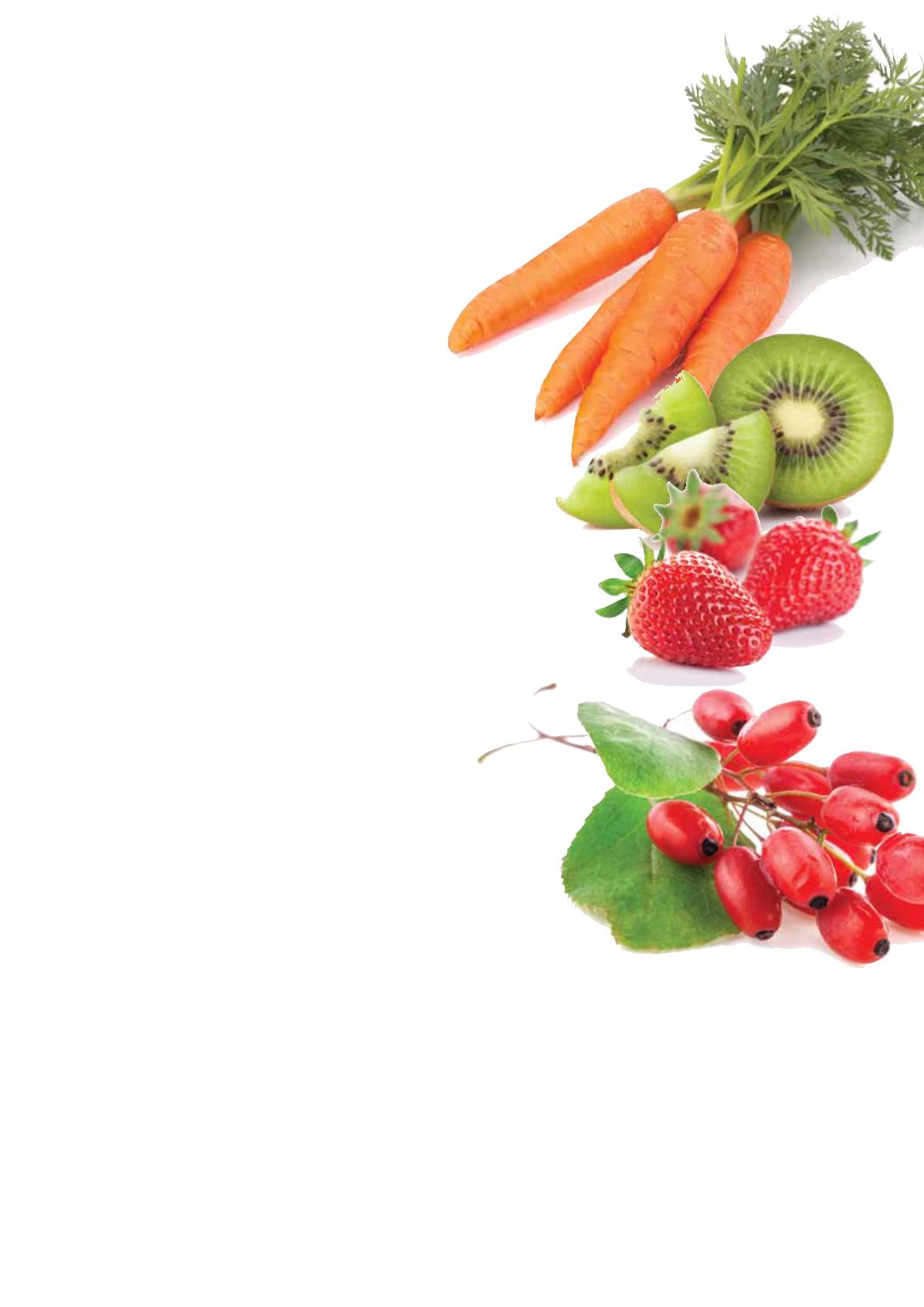
Vegetables, vegetables,
vegetables! We all know that we
should eat more, but the majority of
us are still falling way short of the
basic recommendations. Aim for four
to five servings of vegetables and
three to four servings of fruit per day
to get your recommended 25g to 35g
of fibre. Eat a variety of each colour
(red, yellow, orange, blue and green)
to ensure adequate vitamin, mineral,
phytochemical and antioxidant
intake. Also add beans, lentils and
pulses into your diet.
Vegetables and fruits are known
to protect us in numerous ways:
Fibre:
Vegetables and fruits are full of
fibre, which potentially has an anti-
cancer effect. Fibre aids digestion by
speeding up food’s transit time and
quickly eliminating carcinogens by
binding bad stuff to bile acids, and
increasing faecal water, which might
dilute carcinogens.
Phytochemicals:
These natural
carcinogen-blocking agents are
found in fruits and vegetables. The
cruciferous group (broccoli, cabbage,
Brussels sprouts, mustard greens,
kale and cauliflower) are rich in
sulforaphanes, which have anti-
inflammatory properties. Scientists
are currently investigating whether
they can protect DNA from damage.
Tomatoes and tomato products
contain lycopene, which has been
linked to providing some protection
against prostate cancer, and grapes
contain resveratrol, which has also
been shown to contain protective
elements.
Antioxidants:
Our main sources of
natural antioxidants – chemicals
that block the activity of free radicals
– come from fruits and vegetables.
Free radicals are naturally formed,
highly reactive chemicals found in
the body, which have the potential to
cause damage to cells that may lead
to cancer. In laboratory and animal
studies, the presence of increased
levels of antioxidants has been shown
to prevent the types of free radical
damage that have been associated
with cancer development.
Dietary antioxidants include
beta-carotene, lycopene and vitamins
A, C and E, as well as the mineral
selenium. You can get these by
eating brightly coloured vegetables
and fruits, such as broccoli, carrots,
kale, pumpkin, spinach, sweet
potatoes, tomatoes, kiwis,
oranges, mangoes,
and strawberries.
Vitamin E and
selenium are
also found
in high
quantities in
nuts and seeds, in
addition to broccoli,
spinach, mangoes,
soybeans and some
vegetable oils.
Vegetable proteins:
Large
studies in England and
Germany showed that vegetarians
were about 40 per cent less likely to
develop cancer compared to meat-
eaters. Plant-based proteins have less
fat, more fibre and phytonutrients,
and have a higher concentration of
vitamin C and beta-carotene.
Hype v. reality
Some foods have been
getting a lot of
attention lately,
and are being
hailed as “super-
foods”. Generally,
super-foods are very high in
nutrient value compared to
calorie content and have high
“oxygen radical absorbance
capacity” (ORAC), which
is the ability to neutralise
potentially damaging free
radicals in our body. Based on our
research, several current headline-
grabbers aren’t worth the big bucks
you’ll spend buying them and can be
replaced by cheaper, equally effective
alternatives.
Goji berries:
These Chinese berries
are rich in flavones, which have
been shown to reduce cancer risk.
They also have a high ORAC score,
or antioxidant power. More cost-
effective options that also have high
ORAC scores include blueberries,
raspberries and cranberries.
Acai berries:
These little power
boosters claim to help with weight
loss and offer high antioxidant
properties, but no conclusive
evidence has been demonstrated.
Red wine, pomegranate juice, grape
and blueberry juice are all richer in
antioxidants and are easier on the
pocket.
December 2013
77


